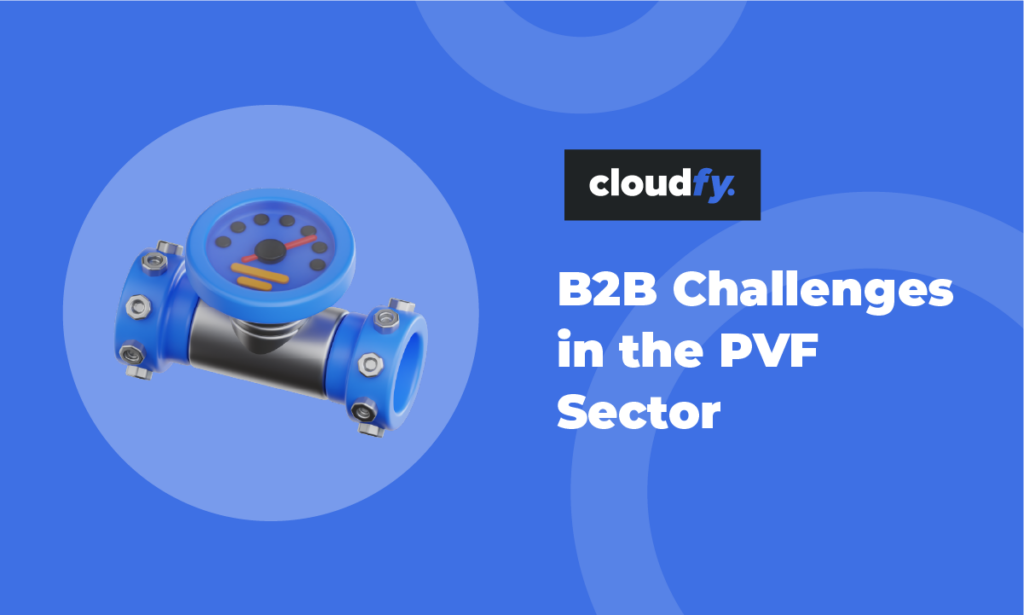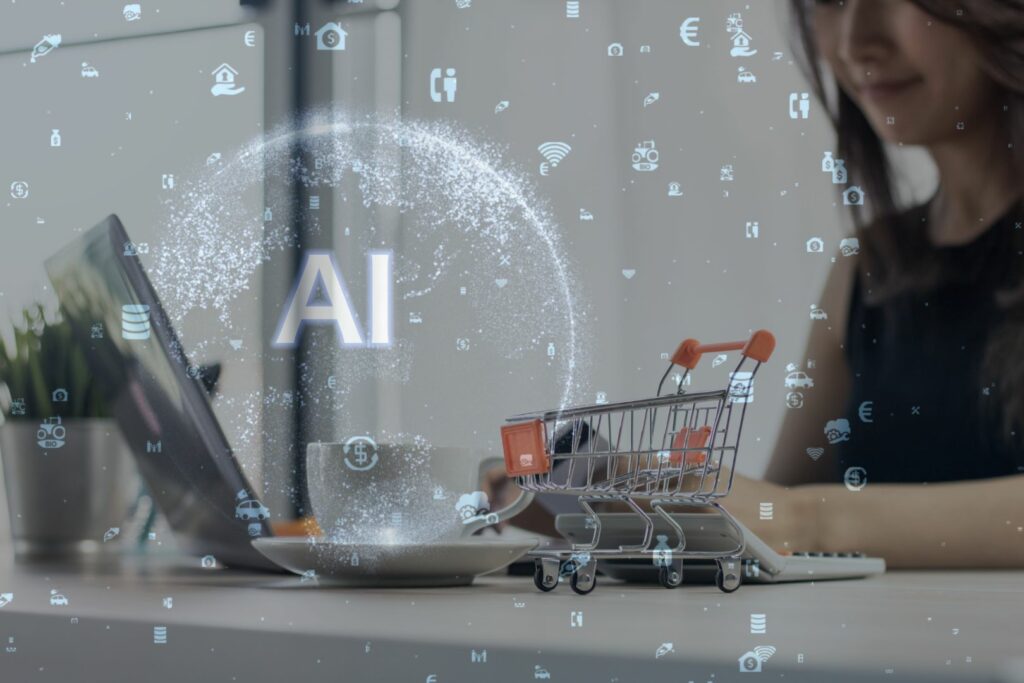Telephone enquiries, paper order forms, rapid turnarounds and tight margins characterize the fast-moving consumer goods (FMCG) sector. However, with expected global growth above 4.5% to 2032 and cost pressures increasing, FMCG manufacturers and distributors need new approaches.
Many retailers have turned to business to business (B2B) ecommerce to streamline their procurement processes and improve inventory management. They can access a wide range of suppliers, agree competitive pricing and improve their product offer.
To support your customers’ transition to digital procurement you must make product discovery and bulk ordering easy. Supported by real-time stock tracking you’ll simplify logistics and improve supply chain efficiency.
The FMCG sector is highly competitive. Manufacturers and distributors can’t afford to spend valuable time and resources on manual sales order processing. Increasingly, retail managers and administrators expect to place orders and manage their accounts online. To meet their requirements, you need a B2B ecommerce solution that’s purpose designed for complex FMCG sales.
From the beginning Cloudfy was created to meet the challenges of B2B sales in fast-moving environments like the FMCG sector. You can launch a new site in weeks rather than months or even years and it’s easy to use too. You can seamlessly integrate your Cloudfy ecommerce platform with your enterprise (ERP) system for end-to-end visibility of your operations.
Your buyers can quickly place their orders and restock their time-sensitive FMCG inventory. As a software as a service (SaaS) solution Cloudfy is scalable and cost effective. You can respond effectively during periods of peak demand and your ecommerce platform can grow with your business. You can automate sales order processing so it’s more efficient and you’ll almost eliminate order errors. You’ll save both time and money and customer satisfaction will improve.

Top 10 B2B ecommerce features for FMCG manufacturers and distributors
With short shelf lives for many FMCG products, ordering is often time critical. You’ll want powerful B2B ecommerce features straight out of the box for easy customer ordering and improved in-house administration.
Easy repeat reordering
Many of your customers reorder the same items again and again. You can save them time and increase customer satisfaction with easy reordering tools. Based on their purchasing history, they can reorder the same items with just a single click. It’s easy to adjust quantities, and they can save favorite order templates.
Sustainability
Consumers are more environmentally aware so actively implementing environmentally friendly practices in the FMCG sector can drive growth. Initiatives to use recycled materials, reduce packaging and save energy are now industry best practices. Offering your B2B customers sustainable choices can strengthen your FMCG brand and attract consumers.
A customer ordering app
Customers can update orders from the shop floor or stock room using a customer ordering app with built-in barcode scanner. They can quickly and easily add products to their basket by scanning codes on individual products, containers or shelves. It works, even without an internet connection. All the items can be uploaded as soon as they’re online again.
Field sales representative app
Paper catalogs simply can’t keep pace with change in the FMCG sector. When you empower your field sales team with a mobile ordering app instead they can take orders on the spot. They can showcase your products, check inventory and customer details immediately. Even without an internet connection, your sales representatives can build up orders to upload when they’re connected again.
ERP Integration
Pre-built integrations with leading ERP systems streamline implementation of your B2B ecommerce solution. You’ll have end-to-end visibility of your operations and key business information in near real time. Your salespeople and customers can see accurate inventory information and customer order histories so they can make informed decisions.
Excel ordering
You can simplify lengthy orders with an Excel order upload facility. Customers can complete a template and upload or email an Excel file to a dedicated inbox. The items are then automatically extracted ready for processing.
Stock alerts
All your customers have to do is tick a box online to receive notifications when their preferred products are back in stock. They can receive their updates either via their customer ordering app or email. Optionally, you can also offer a backorder and pre-order service for all or only selected customers.
Inventory feeds
You can provide daily, weekly, or monthly email exports of your stock counts. Your customers can view, download or import your stock data into their own business systems for easy ordering.
Subscription orders
You can build up a reliable revenue stream with subscription ordering for customers who regularly buy the same items. This is the perfect solution to replenish perishable products with minimal administration. It’s easy to set the frequency, duration and lead time for the subscription so everything will run smoothly. Recurring orders can renew automatically or you can send automated reminders for customers to approve their next order.
Marketplace connectors
Online marketplaces allow you to reach new customers and launch new products. Your buyers can discover and compare products quickly and easily, which is why they are so popular. However, you can’t control their online experiences or build direct relationships with them. Marketplace integration allows you to link your own B2B ecommerce website with popular providers and retail partners.
Direct to consumer (D2C) sales
Engaging with your consumers directly improves your understanding of their needs and increases loyalty. A D2C selling approach provides unique opportunities for personalization, special offers and promotions, and helps you support your retail partners.
Case Study: Primeline
Primeline exclusively distributes selected tobacco products and e-cigarettes to grocery stores and supermarkets throughout Ireland. The company handles very high volume sales for a small number of branded tobacco products. They wanted to improve their online ordering process and chose to replatform with Cloudfy.

Transforming your FMCG business with B2B ecommerce from Cloudfy
Your customers are moving online and you must too if you want to keep pace with growth in the FMCG sector.
Cloudfy’s B2B ecommerce platform allows your customers to order quickly so they can always maintain their time-sensitive FMCG inventory. Cloudfy is designed for complex B2B sales and includes the powerful features you need out-of-the-box. Both you and your customers can benefit from fast and efficient sales order processing. You’ll virtually eliminate errors, improve customer satisfaction, and save time and money.
Find out why Cloudfy is the best B2B ecommerce platform choice for businesses in the FMCG sector. Book a free demonstration today.
Frequently Asked Questions
A leading B2B ecommerce solution modernizes your business and helps coordinate operations between your logistics providers, suppliers, customers and retailers. You can standardize processes and benefit from automation to save time and money. Self-service features improve customer satisfaction and shorten your sales cycle. Your whole catalog and high quality content is available for potential buyers to discover at any time. Personalization for different customers improves engagement and increases conversion rates.
Many ecommerce platforms were originally designed for online retailing so they’re very good at handling large numbers of straightforward single orders. However, B2B selling is very different and in the FMCG sector speed and efficiency are key requirements. That’s why a platform specifically designed for complex B2B sales like Cloudfy can make a big difference. You’ll have all the powerful tools you need, straight out of the box. You’ll also have an application programming interface (API) for any customization you need.
Choosing the best B2B ecommerce platform for your FMCG business will depend on your requirements and priorities. You’ll want to know that your platform can meet peak demand and grow with your business. It’s also important to consider the total cost of ownership of the platform you choose, including maintenance, upgrades and security. Reliability and speed are also important to meet your customers’ expectations and increase satisfaction and loyalty. To meet all of these requirements you should give careful consideration to a SaaS solution.
Your B2B ecommerce platform can improve online sales and synchronize with other business systems in the background. However, full integration with your key business systems streamlines and simplifies your operations. Most importantly, it enables process automation which improves efficiency, saves time and money and minimizes errors. You’ll have a much clearer picture of your whole business in near real time. That means you can improve decision making and stay ahead of your competitors.
Yes, personalization allows you to tailor buyer journeys to suit their needs based on their search behavior and buying histories. When your clients login they can see products they want to buy with prices and promotions relevant to them. You can also include preferred languages, currencies, payment and shipping options. It all improves customer satisfaction and builds long-term loyalty.






